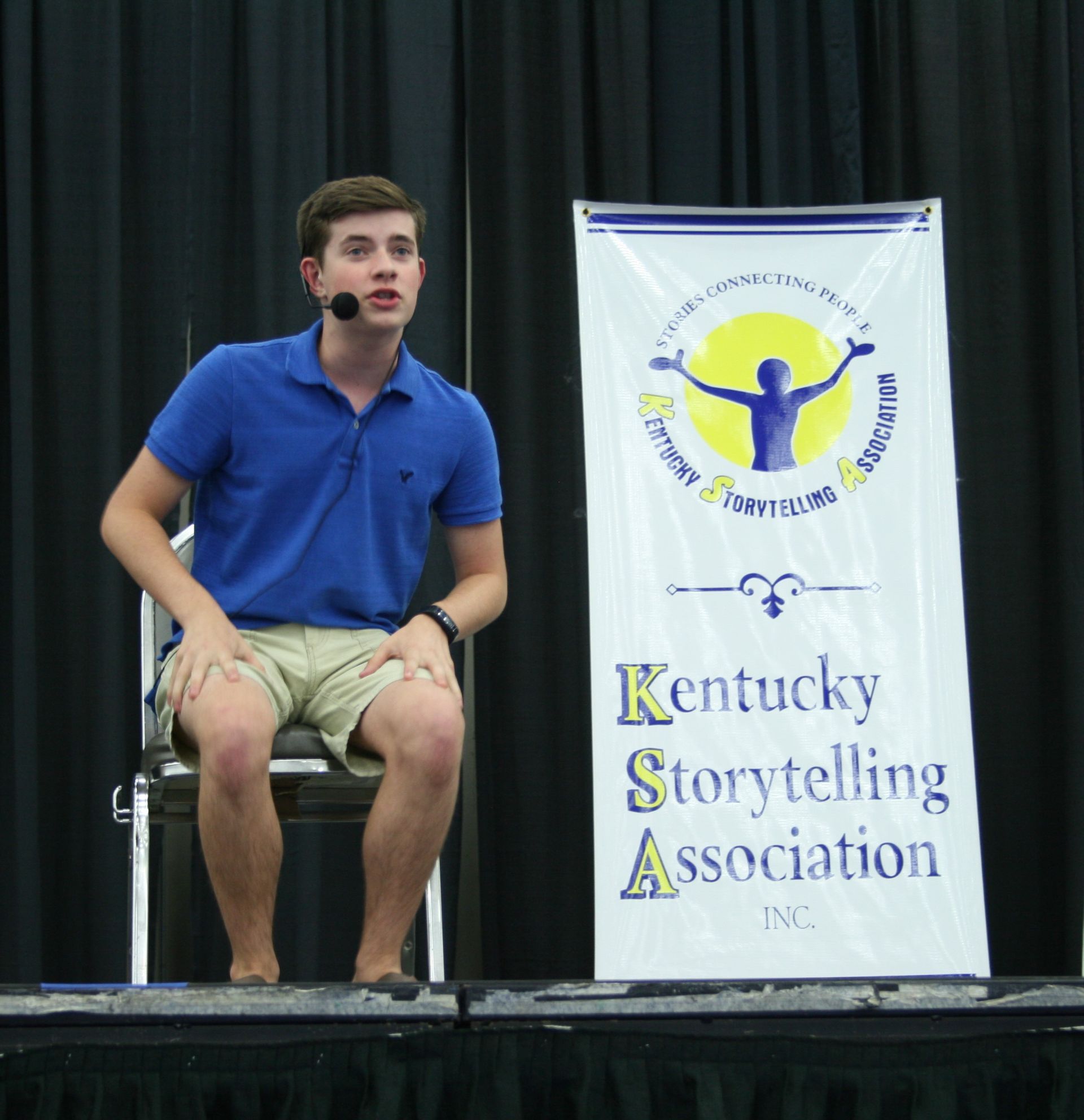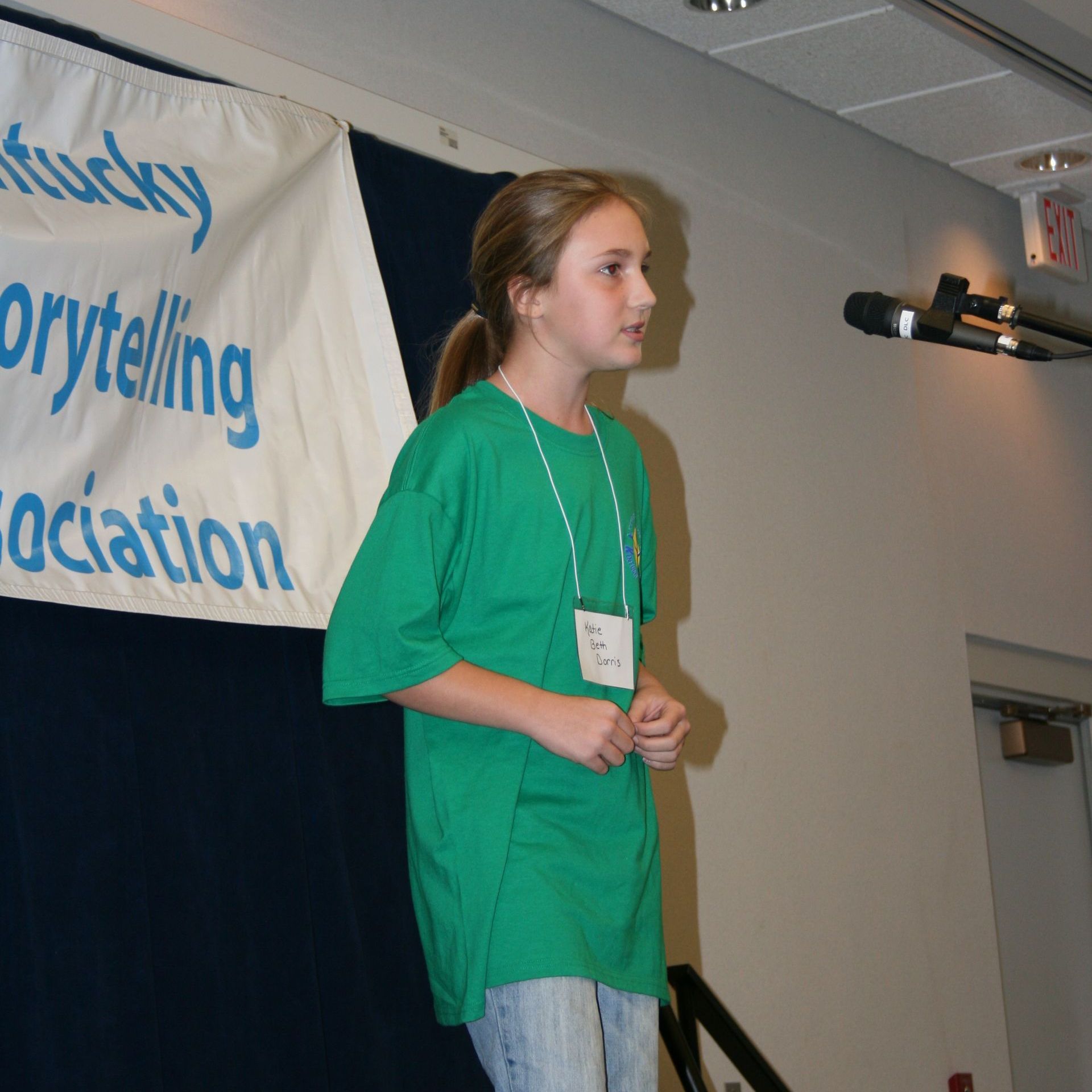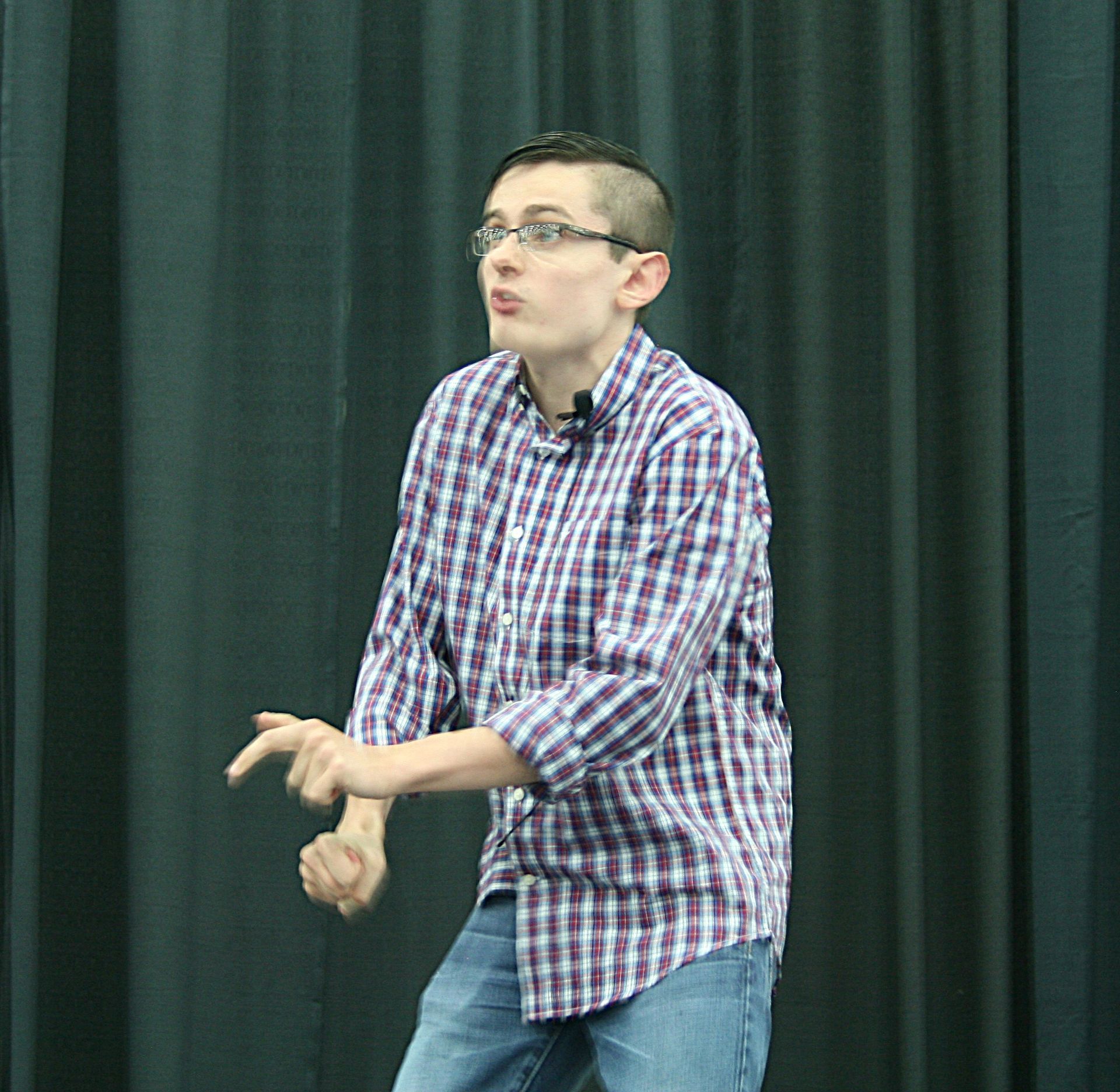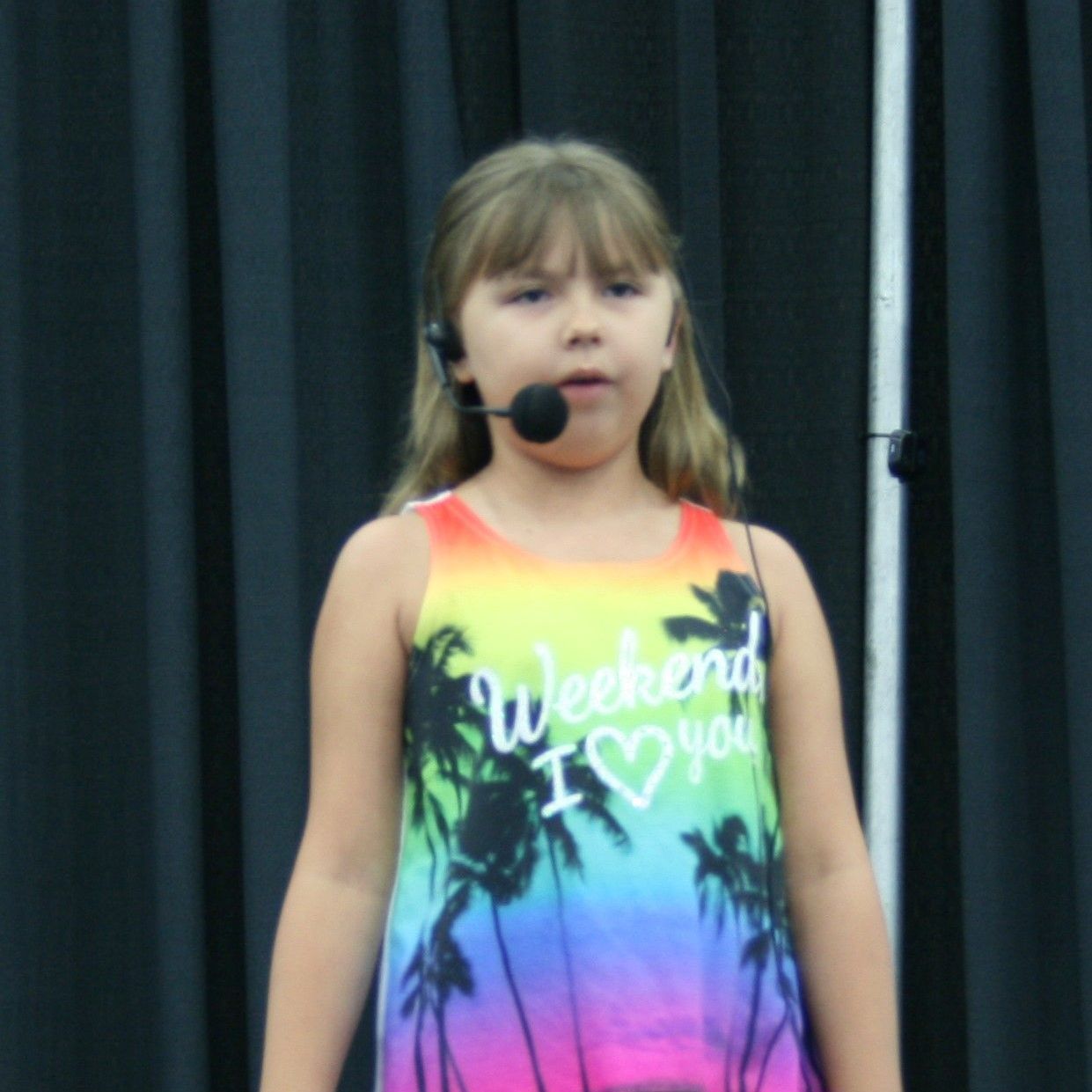Tips for Storytelling
Through the Kentucky Youth Storytelling Program, our goal is to encourage young people to embrace the art of telling stories. We are looking for tellers who are developing and using their presentation and performance skills for the purpose of communicating a story to an audience as opposed to tellers who are using a story to display their performance skills.

Story Selection: Tell the stories that you love. Trying to tell a story you have no affection for will be frustrating for you— and disappointing to the audience. Your story should also be age appropriate. Yes, your story can be one you could tell to an audience younger than you are, but it should not be a tale that would only be appropriate for an adults-only audience.
Learning the Story: There are many ways to learn a story. Some storytellers prefer visual methods, others auditory. Some people like outlines; others create storyboards. Some storytellers use both. Try lots of different ways of learning to find the method that works best for you.
Hint!
Be careful about word for word memorization. Storytelling should not sound like a prose recitation. Even if you have memorized a text you wrote or a text you found, your delivery of it should sound natural, not memorized. In many cases, when your source is a written/published text, you will need to adapt the text for storytelling because your audience will not have access to any information that was conveyed through illustrations, paragraphing, changes in text fonts, or punctuation marks.
Below are thoughts and advice on every section of the Kentucky Youth Storytelling Judging Rubric:
Rate of Delivery
Just as you don’t say every word in ordinary conversation at an even pace, there’s no reason to tell a story with an even pace. Instead, vary your pacing based on what is happening within the narrative portions of your story and/or with how a speaking character is feeling during dialogue portions of your story. Remember, your audience is working hard to picture the story as you tell it, so use pauses to allow them time to imagine.
Hint!
It is never a good idea to talk faster to help your story be told within a set time limit. Instead decide what to leave out to make a long story shorter, or select a different story.
Volume
Yes, you’ll need to project your voice– even when you are using a microphone. If your voice is no louder than a murmur, a microphone will only help your murmur reach the back of a room. It can’t change your murmur into a voice that can be heard. And yet, there’s no need to shout or yell your story to the audience either!
Hint!
To work on vocal projection, have a listener stand across a room from you and start telling. If your listener cannot hear you easily, have them walk toward you until they reach the spot where they can easily hear you. This will help you see how far you are already projecting your voice.

How Does Vocal Projection Work?
How does vocal projection work? Good vocal projection is powered with your breath, not your vocal cords. Power supporting your breath is felt in your abdomen, not in your throat. To project your voice well, you need to breathe fully– from your diaphragm. If you aren’t sure what supporting your breath by breathing from your diaphragm means, ask a vocal music, band, or drama teacher or a choir director for help on breath support for your voice.

Pitch
Effective storytelling sounds neither monotone nor fake. Variety creates interest, but variety with no connection to the story can pull your listeners away from the story by sounding fake instead of believable. And yet- sometimes, even greatly exaggerated vocal pitch changes work well– for example, think of the varied pitch of the voices of the Three Bears in that classic folktale. So, use changes in vocal pitch to support the story– not just to show off your ability to change your voice!
Hint!
Record and listen to your storytelling, or practice in front of someone who will honestly help you avoid such pitch problems as sounding sing-song or ending statements with a high pitch making it sound as though you are asking a question.
Articulation & Pronunciation
Learn how to pronounce foreign or unfamiliar words properly unless the story requires otherwise. Storytellers’ voices typically sound warm, inviting, conversational, and fun, not fake or over precise.
Hint!
If possible, record yourself. Then, listen to the recording while pretending you don’t know the story. Would you understand every word? Or, have you mumbled, rushed, or otherwise slurred some words making them difficult to understand? Do you sound fake or phony?
To help you improve your articulation, use tongue twisters, but instead of concentrating on how quickly you say them, pay attention to how clearly you say them. Tongue twisters exist and can help you practice any sound you may have trouble saying correctly.
Other vocal considerations
Yes, sometimes unfortunate habits develop and a teller ends up using vocal fillers (um, like, you know) or persistent throat-clearing, or lip-smacking, or nose-wrinkling. If you’ve developed such habits, it will take practice to break them.
Hint!
One way to overcome vocal fillers is to close your mouth while you think of what you want to say next. No one is going to interrupt your story, so you really do not have to be making sound all the time. When your mouth is closed, it’s not at all easy to say “um” or “like”– try it!
Watch a recording of yourself telling to help you spot things like lip-smacking or wrinkling your nose every time before you speak or whatever else you may be doing without realizing it. Or have a trusted friend or teacher tell you about anything you are doing that is distracting. Once you know you are doing something you want to stop, you can practice speaking in front of a mirror. Notice how it feels when you do whatever it is you want to stop doing. Eventually, you’ll be able to speak without doing whatever that is (lip-smacking, nose wrinkling, etc.) Once you catch yourself NOT doing whatever it is while speaking in the mirror, you can feel confident you won’t do it when speaking to a “real” audience.
Body Language
Body language in storytelling includes eye contact with the audience, facial expressions, gestures, movement and/or stance when telling a story.
Hint!
It is never necessary to hop from one spot to another to show different characters speaking to each other. Changes in stance, facial expression, vocal tone and/or gesture and body language can clearly let the audience know who is speaking to whom. Such changes will vary from teller to teller and will range from subtle changes to broad changes. The key is that the teller should appear comfortable and natural, and all changes should support rather than detract from audience enjoyment of the story.
What is effective eye contact?
When you use effective eye contact, you look at different people, or different areas of the audience in a large audience, while telling them the story. Typically you share an image, idea, or thought with one person or area of the audience, and then share the next image, idea, or thought with a different person or area of the audience. Your eyes don’t typically sweep across your audience in an effort to connect with everyone at the same time unless a character in the story is making an announcement to a large crowd.
Facial Expressions
Facial expressions should change depending on what is happening in the story and how the narrator or characters feel about what is happening. Of course, when a character is speaking, the teller’s facial expression should fit the emotions of the character at that moment.
Stance refers to posture
While it is important that you not slump, cling to a microphone stand, or otherwise exhibit poor posture, don't maintain one rigid posture throughout your telling of a story either. Your posture will naturally vary with different parts of the narrative. Also different characters may stand a bit differently from each other– different posture or facing a slightly different direction. For example: A king or queen will likely stand a little taller and appear more confident than a character who is nervous about speaking to the king or queen. A teller’s stance will change (and this can be a very subtle change) to show this difference.
Gestures & Movement
Gestures and movement are not required in storytelling, but a storyteller should not appear stiff either. Use gestures that feel natural and support your story. There is no single exactly correct level of gesture or movement to use in storytelling. Instead the teller should appear comfortable. Please do not tell with your hands jammed into your pockets or clenched behind your back– you won’t look comfortable. Waving your hands in the air because you don’t know what to do with them also will not look comfortable.
Effective gestures or movements feel natural. They spring from a desire to communicate with the listeners, not from a belief that every moment of every story must be acted out or the audience will not understand it. For example, if a character in a story falls down, the audience can picture that happening because the teller told them it happened and/or used a downward gesture– it is NOT necessary for the teller to fall down during the telling (which can prove distracting to the audience instead of contributing to the story).
Gestures also call attention to that part of the story. So, just because a teller can mime running or climbing a ladder doesn’t mean miming running or ladder climbing is a good idea unless it is a really important part of the story so you want to call extra attention to it. Or, unless mime is clearly an essential element in the teller’s overall telling style.
Characterization
Story characters are distinguished from each other and from the narrator/storyteller through effective characterization. Characters should be believable and clear. This is achieved through effective use of voice, stance, movement or gestures, so please see all of the tips above as you consider characterization.
Stage Presence
Here’s where your story selection will really pay off. If you have selected a story you enjoy, your delight in the opportunity to tell the story will come through in your telling. If you have learned the story well and have practiced and practiced, while always paying attention to your audience, your confidence that you can recall what comes next and communicate it clearly to the audience in front of you will also shine through. Developing the habit of paying attention to your audience also allows you to adjust your telling based on audience reactions and even comment during your telling in response to audience reactions. Storytelling is storytelling, not story acting. Your telling of a story should never become so frozen it is exactly the same– word for word, gesture for gesture, facial expression for facial expression– every single time you tell the story. When the telling of a story becomes that frozen, the teller is paying little attention to the reactions of the audience.

Hint!
Yes, sometimes unfortunate habits develop and a teller ends up engaging in distracting behaviors (pacing, fidgeting, hands jammed uncomfortably into pockets, playing with hair, bouncing heel to toe, swaying, etc.). If you’ve developed such habits, it will take practice to break them. Watch a recording of yourself telling to help you spot distracting behaviors. Or have a trusted friend or teacher tell you about anything you are doing that is distracting.
Once you know you are doing something distracting, you can work on breaking that habit. You can practice telling your story in front of a mirror.
Or, have a trusted friend mirror back your distracting action when you are doing whatever it is you want to stop doing. For example, if you want to stop playing with your hair, your friend could play with her hair while sitting in the audience every time you play with your hair while speaking. Your friend’s actions would be your cue to stop. Once you are no longer doing the distracting behavior while speaking in the mirror and/or your trusted friend has no mirroring to do when you tell, you can feel confident you won’t engage in that behavior when speaking to a “real” audience.
The Story
Yes, your story needs to make sense to the audience. So, you’ll need to develop the habit of watching their reactions and listening to what you are saying while you tell the story. Yes, storytelling requires attention on the story, attention on the delivery of the story/what you are doing, and attention on the audience/how they are reacting.
Hint!
So, what can you do if you discover you’ve left something out or made some other mistake?
First, if the mistake is something you simply wish you had done differently, but your audience is not likely to be confused, ignore it! However, if the mistake is going to create confusion for your audience because you’ve left out essential information, you’ll need to work the information into your telling. How do you do that?
Do not apologize or otherwise call attention to the mistake, if you can avoid doing so. Instead keep audience attention on the story. Sometimes you can just keep telling by slightly changing the order of events. Maybe a character was supposed to visit one place before another, but it’s really okay if they visit them in a different order during this telling. Maybe a character needs to have something in a pocket to pull out later, but you’ve said his/her pockets were empty. Have them find whatever it is they will need and put it in their pocket, then smoothly go on with the story.
Sometimes you just have to fill the audience in on the missing information.
Here are some handy phrases to know in such situations:
- “I really must tell you that. . .”
- “Now, even before that happened, . . .” (Both of these typically said as if you are letting the audience in on something secret instead of telling them something you simply forgot to say)
- “Did I tell you . . .?” Audience will say no, or shake their heads, and then you can say something like, “Well, let me tell you. . .” If audience members say yes or nod, you can always respond with “Good, because you need to know that” and then carry on with the story.
Closing Thoughts
We at the Kentucky Storytelling Association Youth Storytelling Program encourage you to set your own storytelling goals. Only you know whether or not you feel comfortable when you tell your story. (An observer can tell you if you seemed comfortable, but only you know if you actually felt comfortable.) Only you know if you told the events in the order you intended. Only you know if you became distracted during your telling. Only you know if you enjoyed telling the story.

Audiences can be very helpful– if you use them to find out what only they can tell you. Only your listeners know if they could hear you easily. Only your listeners know if they became confused or followed the story easily. Only your listeners know if they enjoyed hearing the story.
So, don’t hesitate to set your own storytelling goals and don’t hesitate to ask your listeners for information about what only they can tell you.
For more hints and tips on telling stories, we especially recommend
this online resource created by storyteller Heather Forest. You’ll find lots of tips on storytelling, including information on coaching young tellers, activities for developing specific skills, and ideas for self-assessment for both tellers and listeners.



